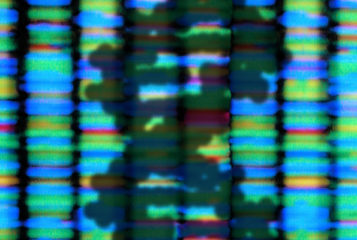Human tear gland organoids, which actually produce tears, have been grown in the lab from stem cells and transplanted into mice.
Tear glands are located in the upper inner corner of each eye and produce tears, which keep the eyes lubricated. When they are not working properly, as in conditions such as Sjögren's syndrome and dry-eye syndrome, this can lead to damage to the surface of the eye.
'Dysfunction of the tear gland, for example in Sjögren’s syndrome, can have serious consequences including dryness of the eye or even ulceration of the cornea. This can, in severe cases, lead to blindness,' said Dr Rachel Kalmann, an ophthalmologist at University Medical Centre (UMC) Utrecht in the Netherlands.
Dr Kalmann, alongside other researchers from Professor Hans Clevers' group at the Hubrecht Institute and UMC Utrecht in the Netherlands, developed a way to grow organoids that resemble tear glands to help scientists better understand conditions such as Sjögren's syndrome where they do not work as they should. Their findings were published in the journal Cell Stem Cell.
To create these organoids, the researchers first took cells from a mouse tear gland and found the right conditions to grow them in the lab. They then used the same approach to create organoids from cells taken from healthy human tear glands. This included isolating stem cells and culturing them in a cocktail of growth-stimulating factors.
By tweaking this cocktail, for example by adding the neurotransmitter noradrenaline, the organoids could be made to produce tears. As the organoids did not contain ducts, when they were stimulated to produce tears, these pooled up inside them and they swelled up like balloons.
'The chemical message that comes from the neurons to your tear glands is adrenaline. So, to really show that we had functional tear glands, we needed to show that they would respond to adrenaline,' Professor Hans Clevers, who led the group that carried out the research, told the Guardian.
Researchers then successfully transplanted the organoids into mice, but the ability to create tears in those tear glands was not demonstrated.
The ultimate aim was still transplantation said Professor Clevers, who told the Times: 'You will probably get rid of dry eye disease. It will just be about time and money but it is definitely doable.'
Sources and References
-
Not a dry eye in the lab as scientists create new tear ducts using stem cells
-
Crying human tear glands grown in the lab
-
Scientists grew tiny tear glands in a dish - then made them cry
-
Exploring the human lacrimal gland using organoids and single-cell sequencing
-
For crying out loud: Dutch scientists grow human tear glands
-
Miniature human tear glands grown in a lab cry real tears just like us




Leave a Reply
You must be logged in to post a comment.